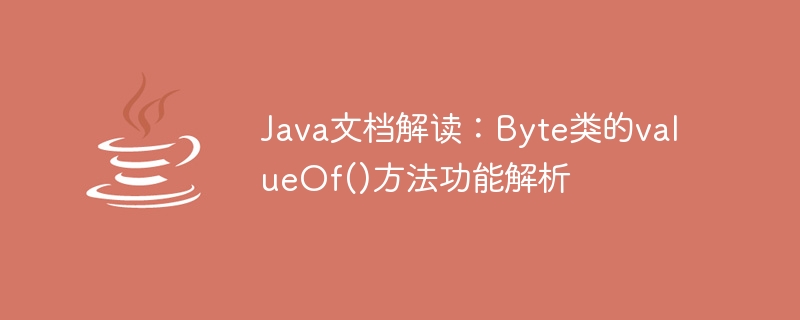

The Byte class is a class in the Java8 standard library that provides some useful methods to operate on byte data types. One of the important methods is valueOf(). This article will analyze the function of this method and provide some specific code examples to illustrate its use.
1. Method definition
The valueOf() method is a static method of the Byte class. Its definition is as follows:
public static Byte valueOf(byte b)
This method receives a byte type parameter b and returns A Byte object.
2. Method function
The main function of the valueOf() method is to convert a byte type original value into a Byte object. This Byte object can be used to represent the byte value and provides some methods for manipulating the value.
For example, we can use the valueOf() method to create a Byte object:
byte b = 10; Byte byteValue = Byte.valueOf(b);
The above code will convert the byte value 10 into a Byte object and assign the object to the variable byteValue .
The Byte object created using the valueOf() method has the same functions and properties as the Byte object created through the new keyword. The only difference is that using the valueOf() method provides better performance and memory management.
3. Code Examples
The following are some code examples using the Byte.valueOf() method:
1. Convert byte to Byte object:
byte b = 127; Byte byteValue = Byte.valueOf(b);
2. Parse the string into a Byte object:
String str = "20"; Byte byteValue = Byte.valueOf(str);
3. Convert the Byte object into the original byte type:
Byte byteValue = Byte.valueOf("10");
byte b = byteValue.byteValue();4. Convert the Byte object into a string in other bases:
Byte byteValue = Byte.valueOf("10");
String hexString = byteValue.toString(16);
String octalString = byteValue.toString(8);The above code example demonstrates the basic usage of the valueOf() method of the Byte class, which can help readers understand the basic functions of this method. In practical applications, we can use other methods provided by the Byte class, such as parseByte() method, toUnsignedInt() method, etc., to operate byte data types.
In short, the valueOf() method of the Byte class is a very useful method. It can convert the original value of the byte type into a Byte object, provide some convenient methods to operate the value, and also improve the code. performance and memory management.
The above is the detailed content of Interpretation of Java documentation: Analysis of the function of the valueOf() method of the Byte class. For more information, please follow other related articles on the PHP Chinese website!




